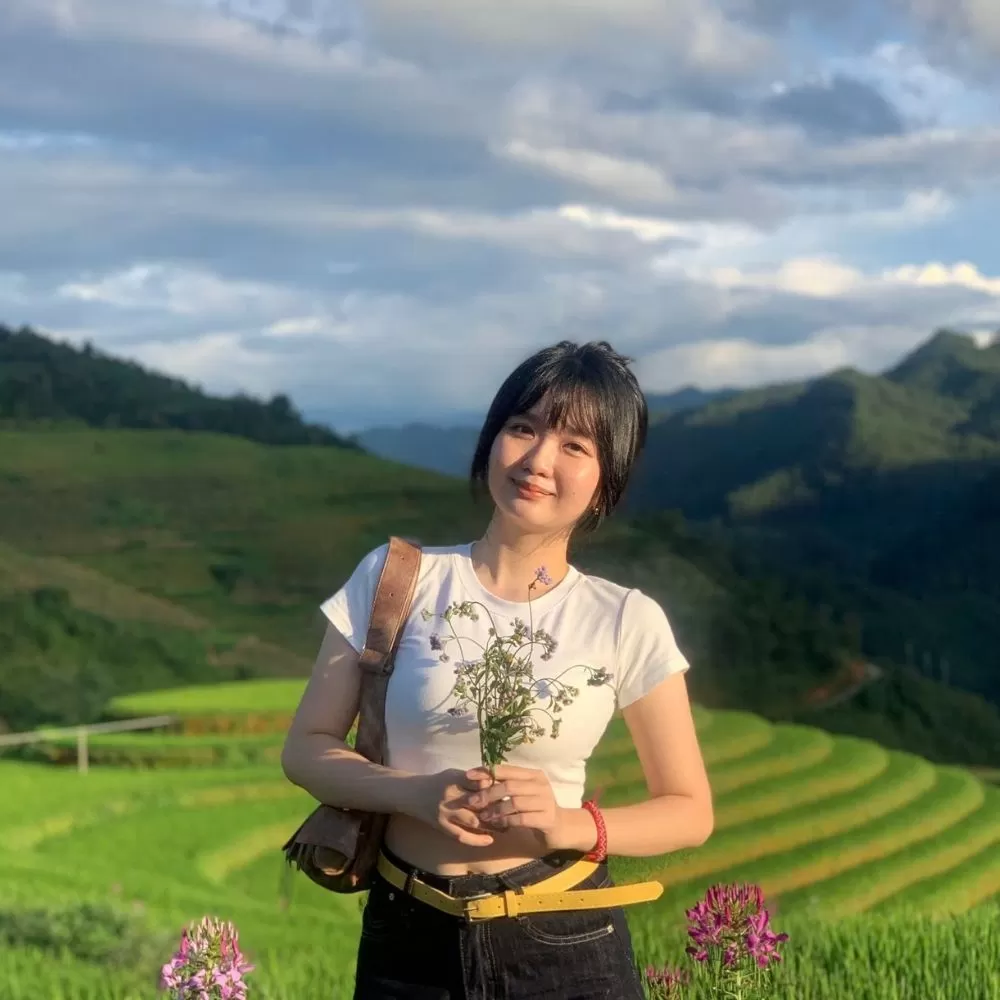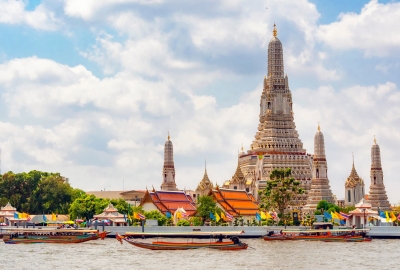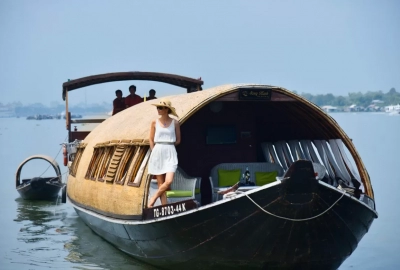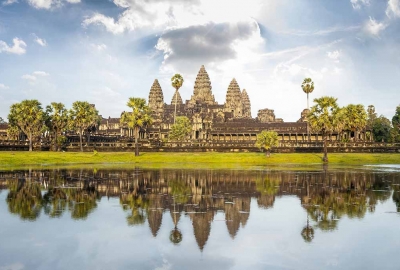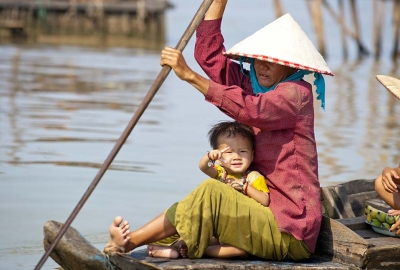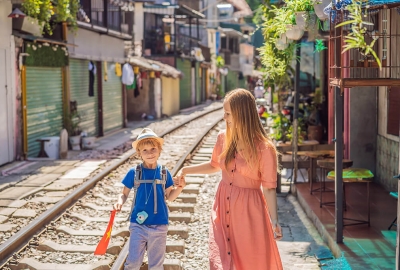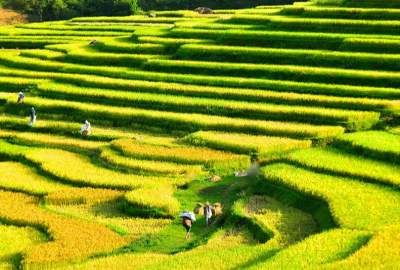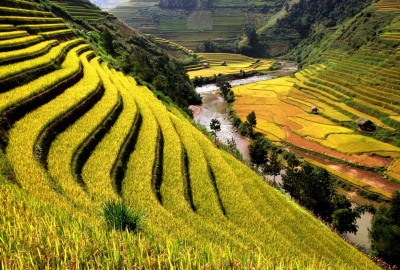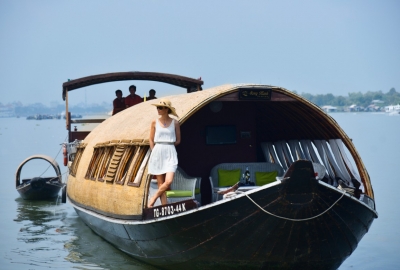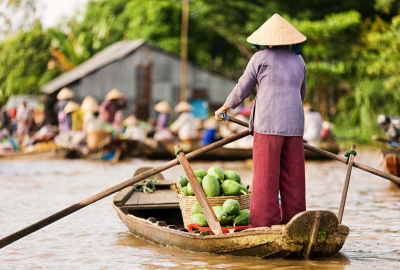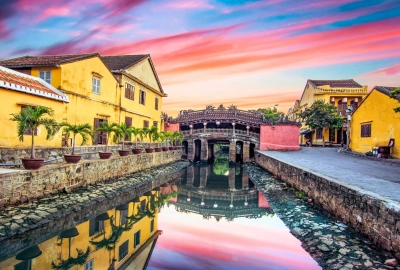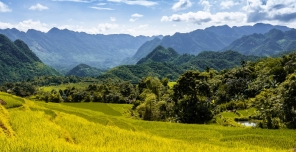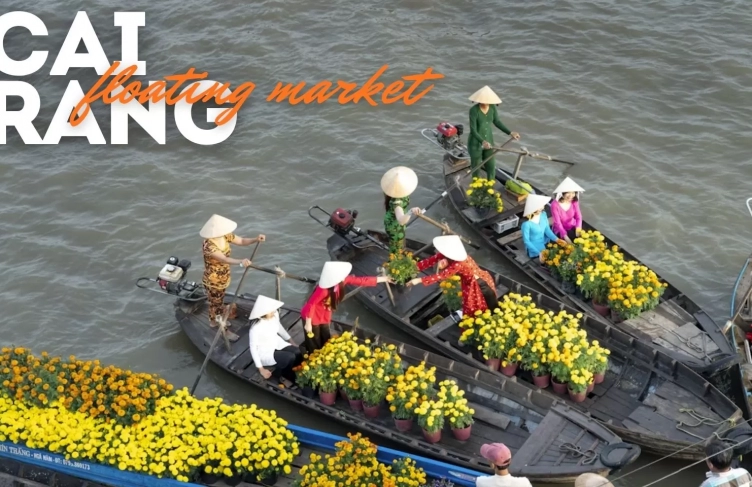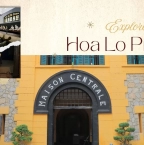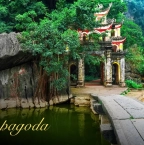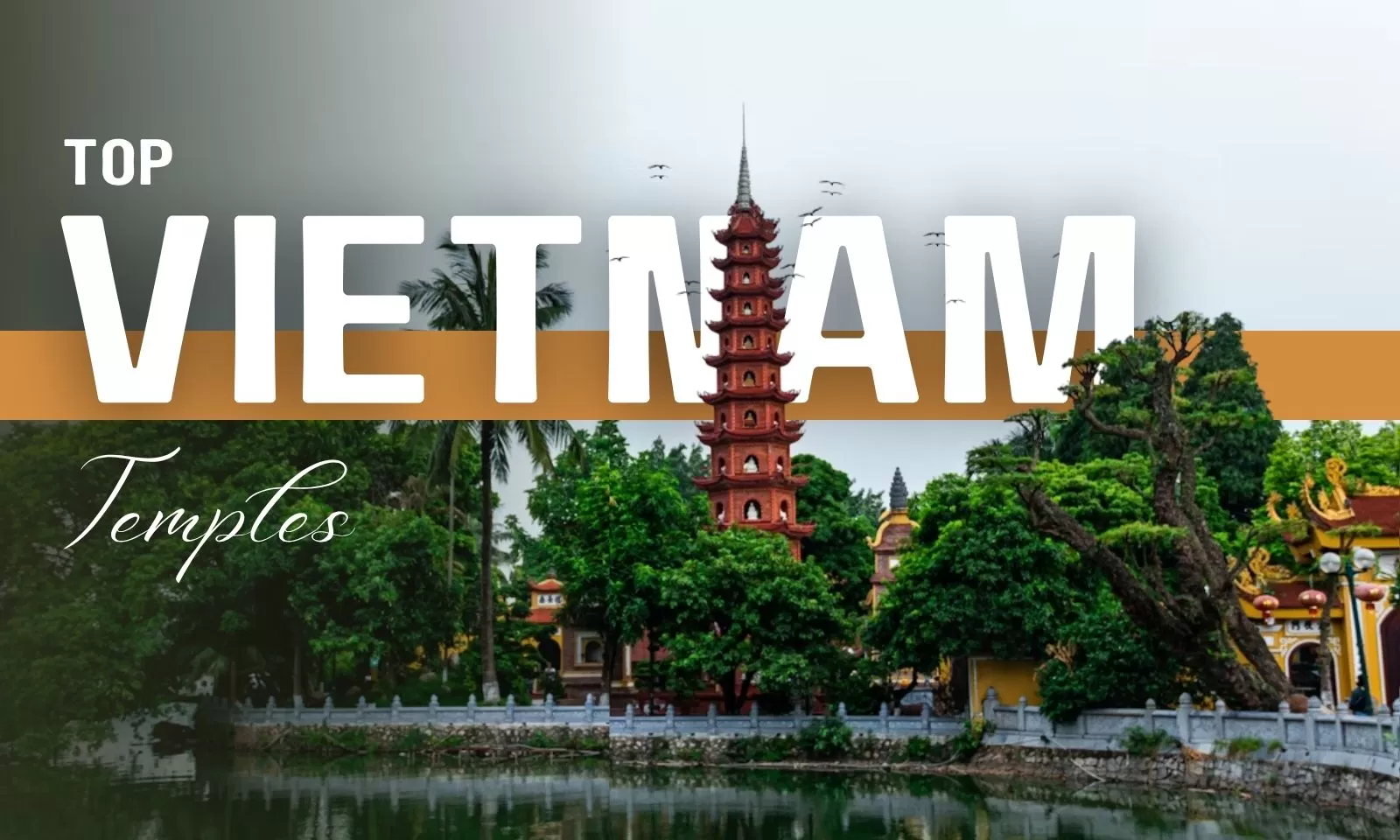
Top 7 temples in Vietnam you can't miss during your trip
Temples in Vietnam offer a glimpse into the country’s spiritual roots and cultural heritage. With stunning architecture and serene settings, these sacred sites reveal centuries of history and devotion, making them essential stops on any meaningful journey through Vietnam.

Vietnam is a country rich in cultural and spiritual traditions, where ancient temples are found throughout the land, deeply reflecting the people’s spiritual life. Stretching from north to south, these temples are not only sacred pilgrimage sites but also architectural masterpieces that have preserved centuries of history. Exploring temples in Vietnam offers a meaningful way to connect with local culture, experience Buddhist beliefs and find moments of peace amid the hustle of everyday life.
In this blog, you'll discover 7 outstanding temples that represent the spiritual beauty and architectural artistry of Vietnam. Whether you're a culture lover, photography enthusiast, or simply seeking a tranquil escape, these temples promise unforgettable experiences.
Let Hanoi Voyages guide you through the most remarkable and soulful temples in Vietnam.
Table of Contents
Discover top 7 most famous temples in Vietnam
Vietnam, rich in its millennia-old history and unique culture, is home to majestic temples that bear witness to the country's spirituality and traditions. These sacred sites are not only symbols of local faith, but also architectural wonders to discover during a trip. We're about to take you on a journey through the 7 most famous temples in Vietnam, spiritual treasures that are a must-see for any culture and travel enthusiast.
Temple of Literature (Hanoi)
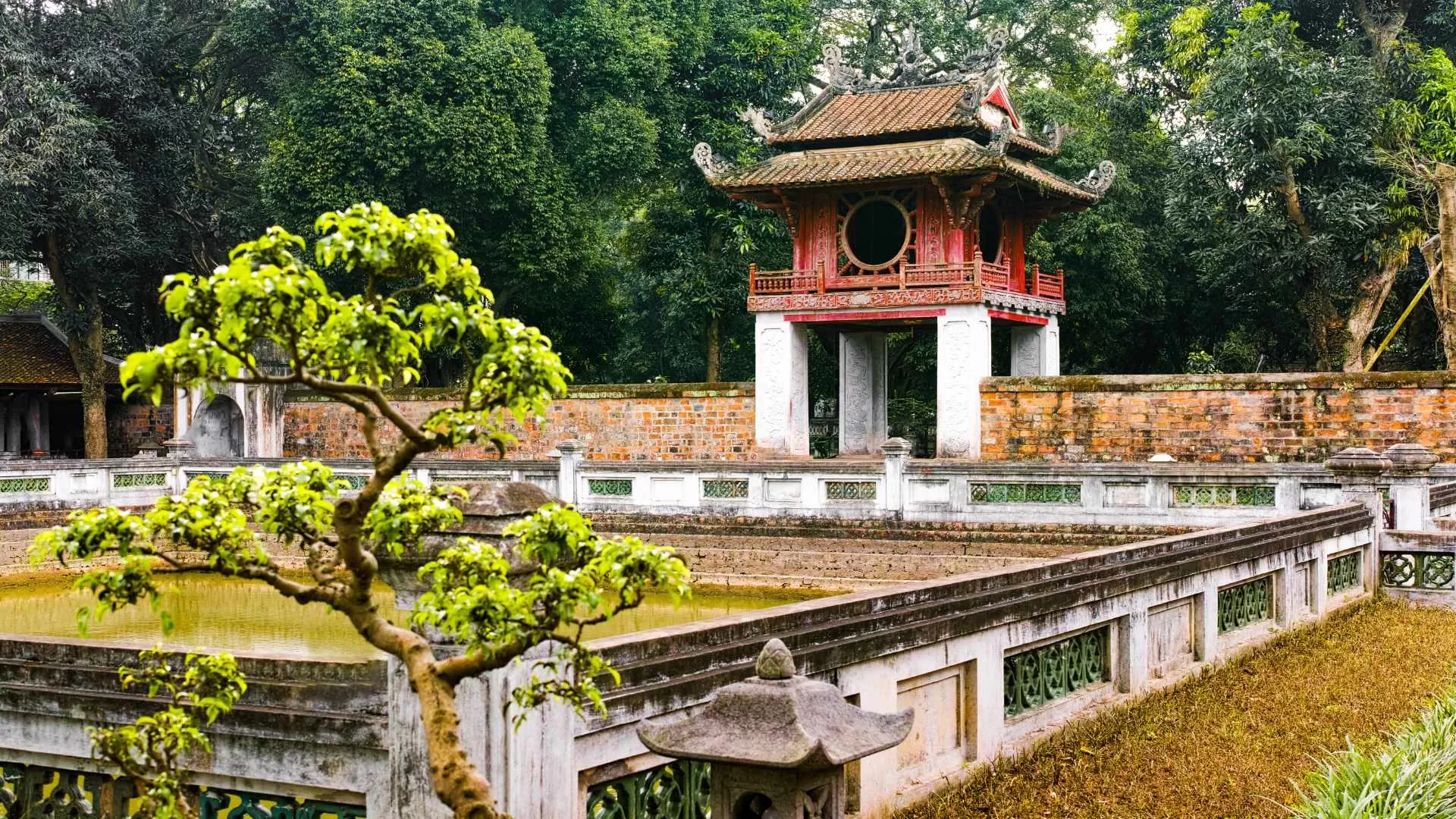
Address: No. 58, Quoc Tu Giam Street, Dong Da District, Hanoi
Opening hours: 8:00 AM – 5:00 PM daily.
Entrance fee: 70,000 VND (~$3)
In Hanoi, the Temple of Literature is a must-see for any tourist seeking history and culture. Established in 1070, this complex dedicated to Confucius symbolizes the heart of Vietnamese wisdom with lush gardens, tranquil ponds and ancient houses. Each space of the temple exudes serenity and tranquility, perfect for a peaceful stroll. You will also find the Steles of Doctors. 82 steles were placed on the backs of stone turtles to represent the longevity of the national essence, reflecting the cultural and historical values of the country for hundreds of years. Not only is this place a spiritual place, but it also represents a true living museum.
Ngoc Son Temple (Hanoi)
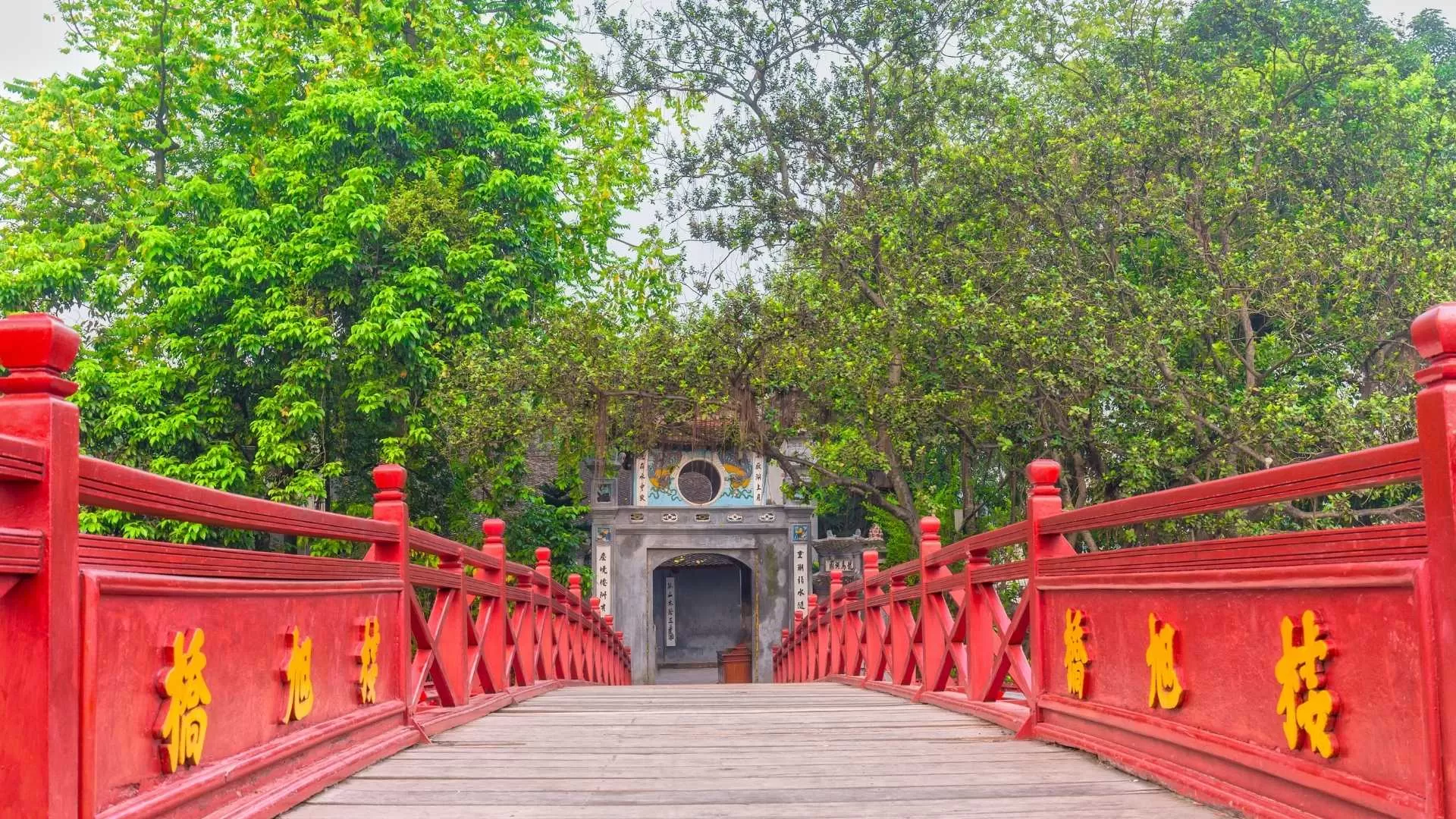 | 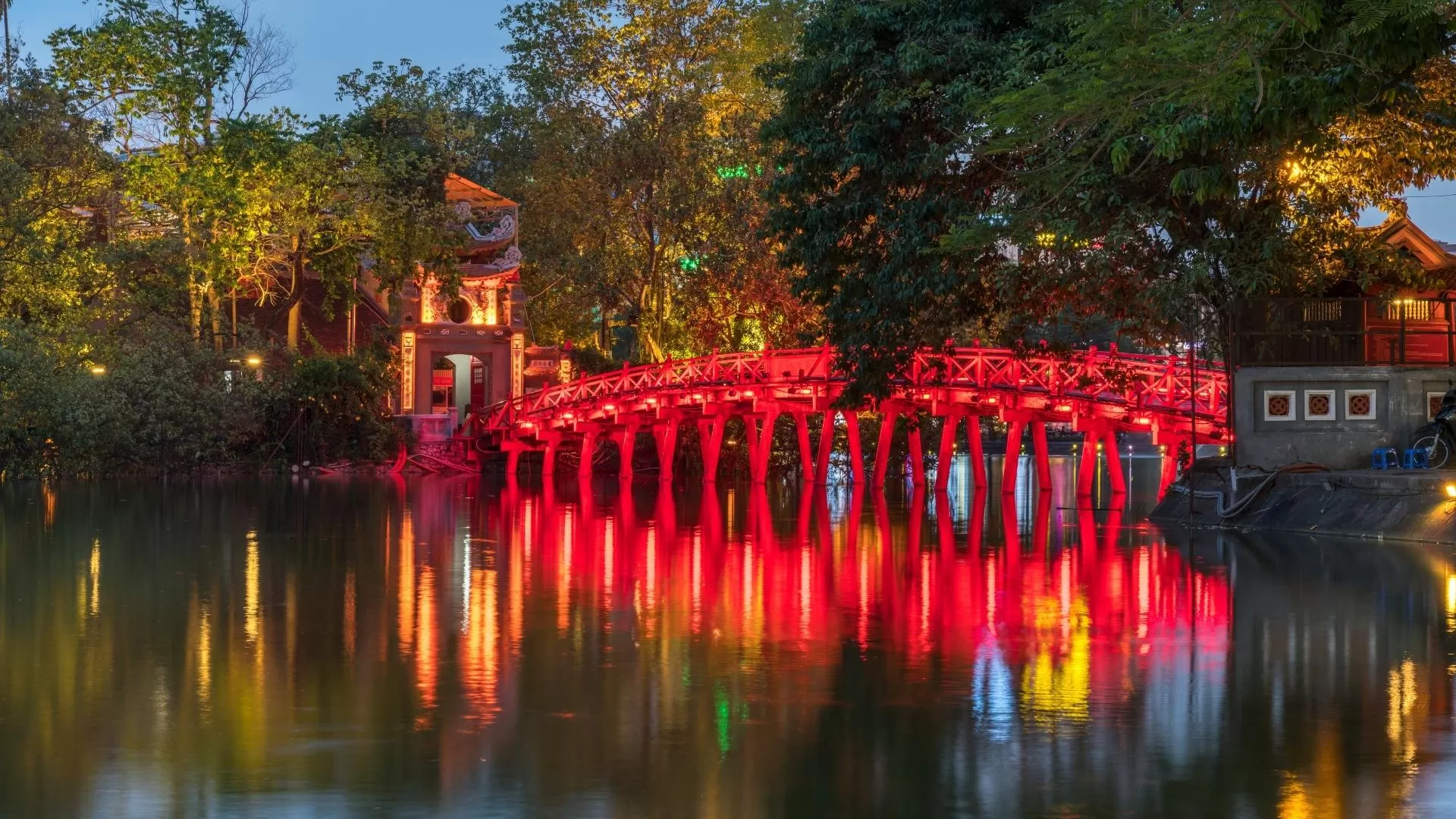 |
|---|
Address: Hoan Kiem Lake, Dinh Tien Hoang Street, Hanoi
Opening hours: 8:00 AM – 6:00 PM
Entrance fee: 30,000 VND (~$1.20)
Ngoc Son Temple sits on a tiny island in the middle of Hoan Kiem Lake, accessible via the iconic scarlet-painted The Huc Bridge. Built in the 19th century, it honors General Tran Hung Dao, a national hero who defeated Mongol invaders in the 13th century, as well as other scholars and religious figures.
The temple’s scenic surroundings make it a peaceful escape amid the hustle of Hanoi’s Old Quarter. Inside, visitors can see altars, calligraphy and an embalmed giant turtle—believed to be one of the legendary Hoan Kiem Lake turtles.
Tran Quoc Pagoda (Hanoi)

Address: Thanh Nien Street, Tay Ho District, Hanoi
Opening hours: 7:00 AM – 6:00 PM daily
Entrance fee: Free
Located on a small peninsula on West Lake, Tran Quoc Pagoda is the oldest Buddhist temple in Hanoi, dating back to the 6th century during the Early Ly Dynasty. With its harmonious architecture, the iconic 11-story Bao Thien Tower, and peaceful surroundings, the pagoda attracts both worshippers and travelers seeking spiritual calm and scenic beauty. This historical and cultural landmark is a serene escape in the heart of the bustling capital. Watching the sunset over West Lake from the pagoda offers a tranquil and poetic experience.
For more information, you can read : Visit Tran Quoc pagoda: A must-see historic site in Hanoi
Dinh and Le Dynasty Temples (Ninh Binh)
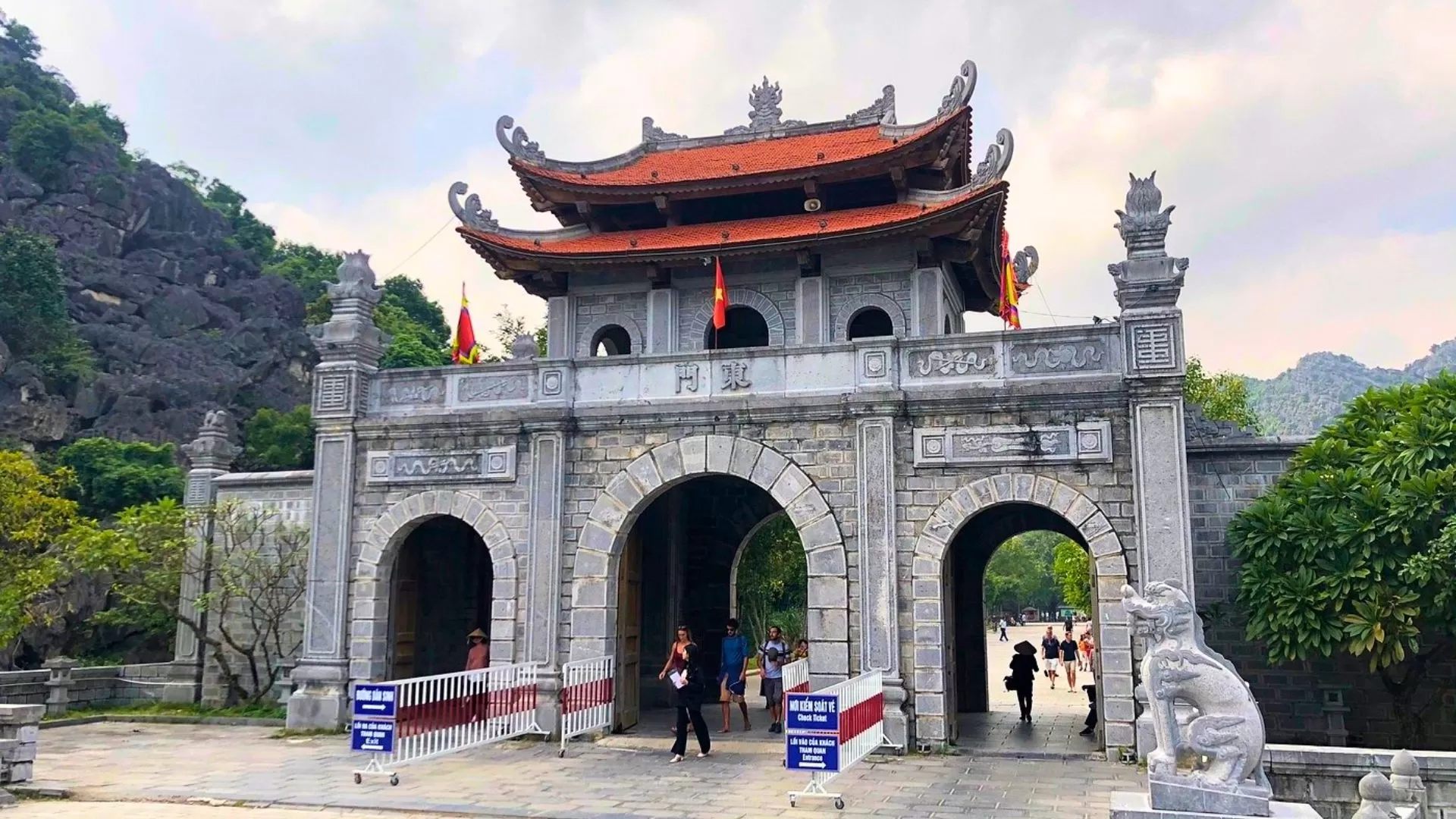
Address: Hoa Lu Ancient Capital, Truong Yen Commune, Hoa Lu District, Ninh Binh
Opening hours: 7:00 AM – 6:00 PM
Entrance fee: 20,000 VND (~$0.80)
Located in the heart of the Hoa Lu ancient capital, these temples honor King Dinh Tien Hoang and King Le Dai Hanh, the founders of the Dinh and Le dynasties. Built in the 17th century, they’re among the most historically important temples in Vietnam.
The temples are constructed mainly of ironwood and sit against a dramatic backdrop of limestone karst mountains. Inside, you'll find elaborately carved altars, incense burners and statues of the emperors. The serene landscape and cultural depth make it a must-visit for those interested in Vietnamese heritage.
Hung Kings Temple (Phu Tho)
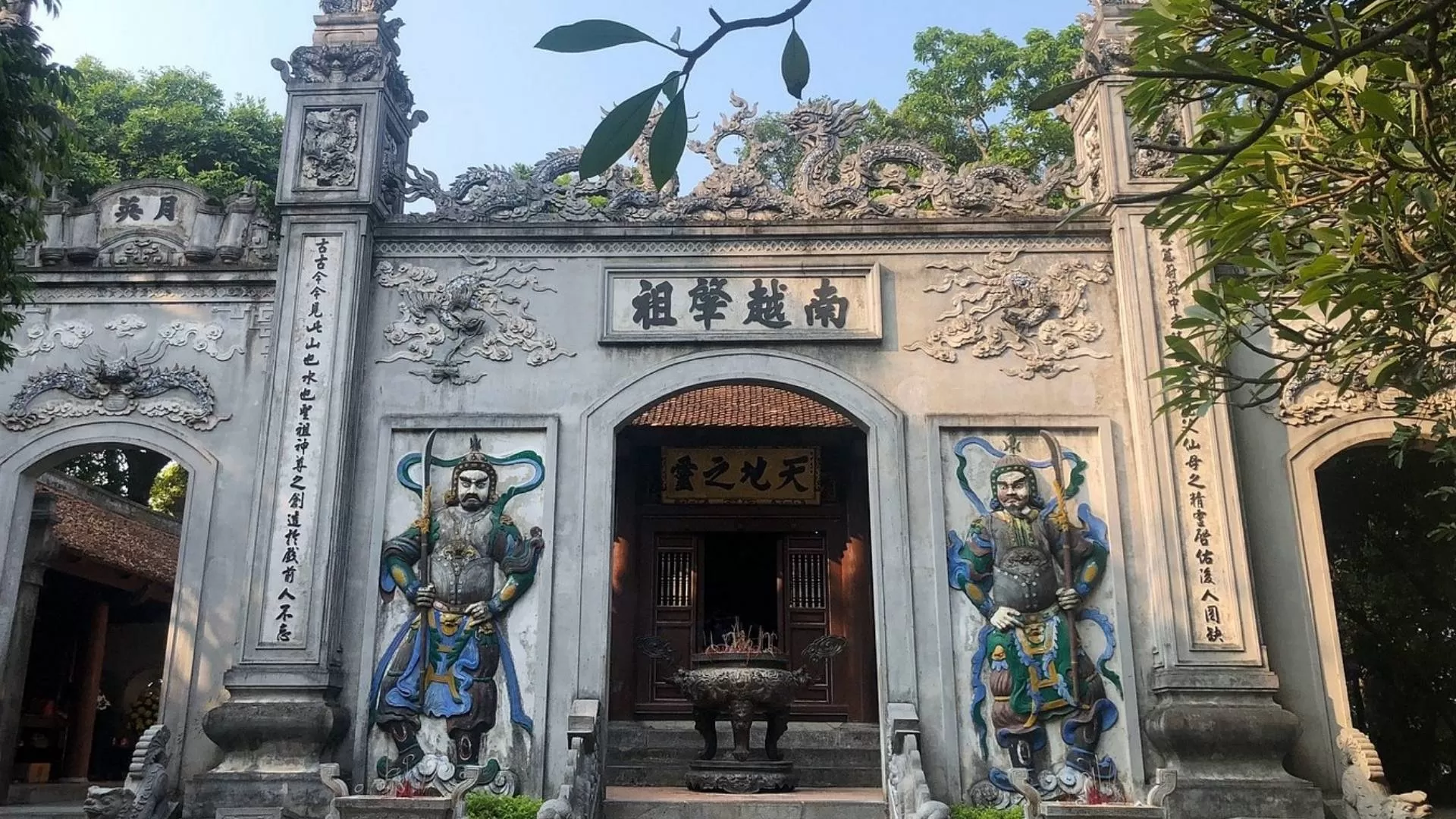
Address: Nghia Linh Mountain, Viet Tri City, Phu Tho Province
Opening hours: 7:00 AM – 6:00 PM
Entrance fee: Free
The Hung Kings’ Temple complex is considered the spiritual heart of Vietnam, built to honor the semi-mythical founders of the Vietnamese nation. Located on Nghia Linh Mountain, the site includes several temples and altars nestled among pine forests and mountain trails.
Every year on the 10th day of the third lunar month, thousands of people join the national Hung Kings’ Festival to pay homage. It’s not only one of the most famous temples in Vietnam, but also a vital symbol of national unity and ancestral reverence.
Lieu Hanh Holy Mother Temple (Quang Binh)
Address: Phu Luu Village, Phong Nha Town, Bo Trach District, Quang Binh
Opening hours: 6:00 AM – 5:00 PM
Entrance fee: Free
Located near Phong Nha, this temple is dedicated to Lieu Hanh, one of the Four Immortals in Vietnamese folk religion. She is a central figure in the Dao Mau tradition, which worships mother goddesses and reflects the role of women in Vietnamese spirituality.
The temple, though modest in size, is revered by locals and pilgrims. Traditional rituals often include music, incense and offerings in hopes of receiving protection and blessings. This temple highlights how temples in Vietnam embrace diverse spiritual practices beyond mainstream Buddhism.
Cao Dai Temple (Tay Ninh)
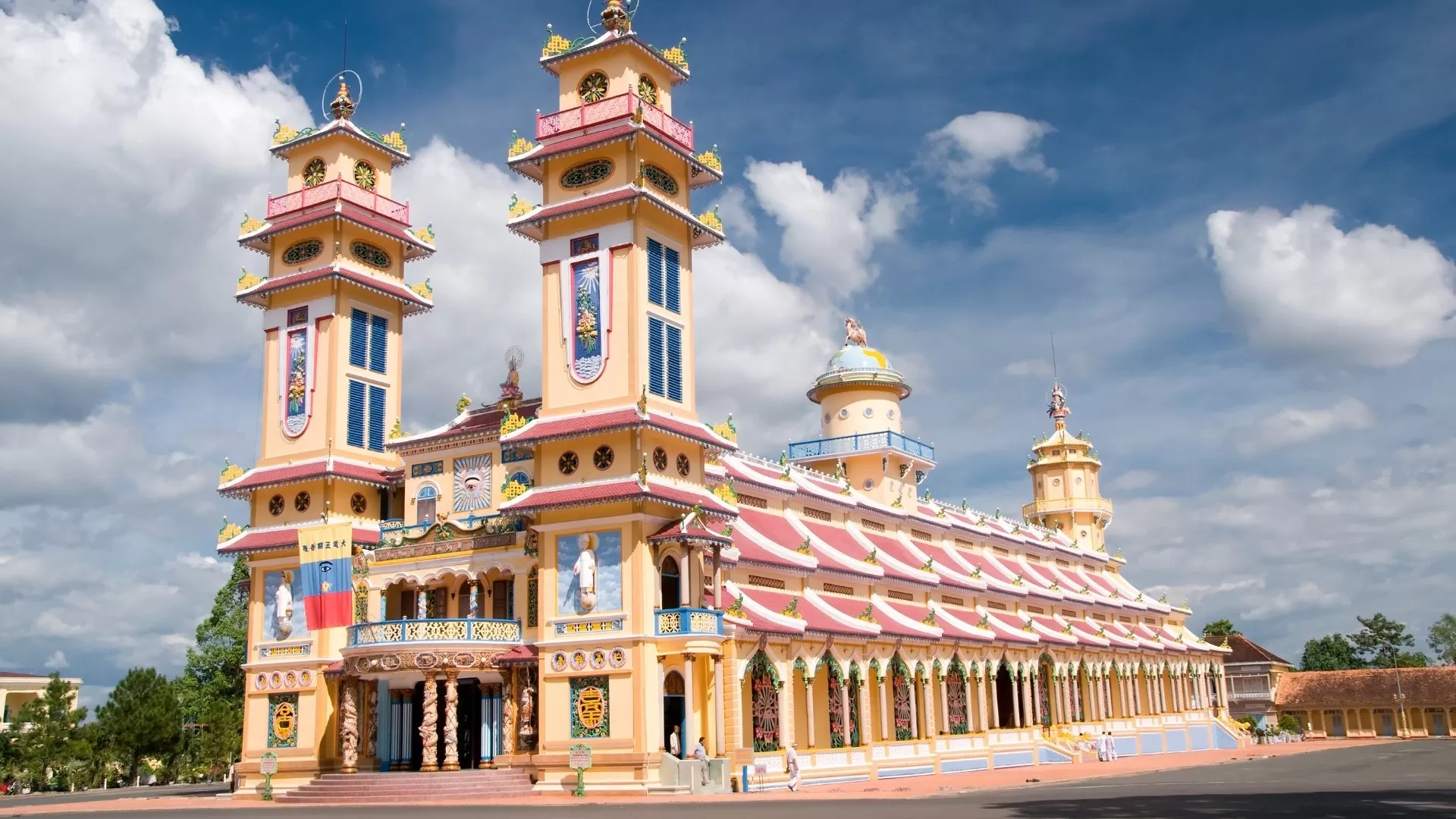
Address: Long Hoa Ward, Hoa Thanh District, Tay Ninh Province
Opening hours: All day
Entrance fee: Free
This stunning temple is the center of the Cao Dai religion, which emerged in southern Vietnam in the 1920s. Caodaism combines elements of Buddhism, Christianity, Taoism, Islam and Confucianism into one unique faith.
The temple's architecture is incredibly eye-catching, painted in bright pastel colors and decorated with symbolic dragons, eyes and stars. Visitors are welcome to observe the noon mass ceremony, where followers in white robes chant in unison.
👉 Ready to explore the best of Vietnam? Let Hanoi Voyages craft a fully customized itinerary tailored to your pace and interests. Contact us now and start planning your unforgettable journey to Vietnam!
 |  | 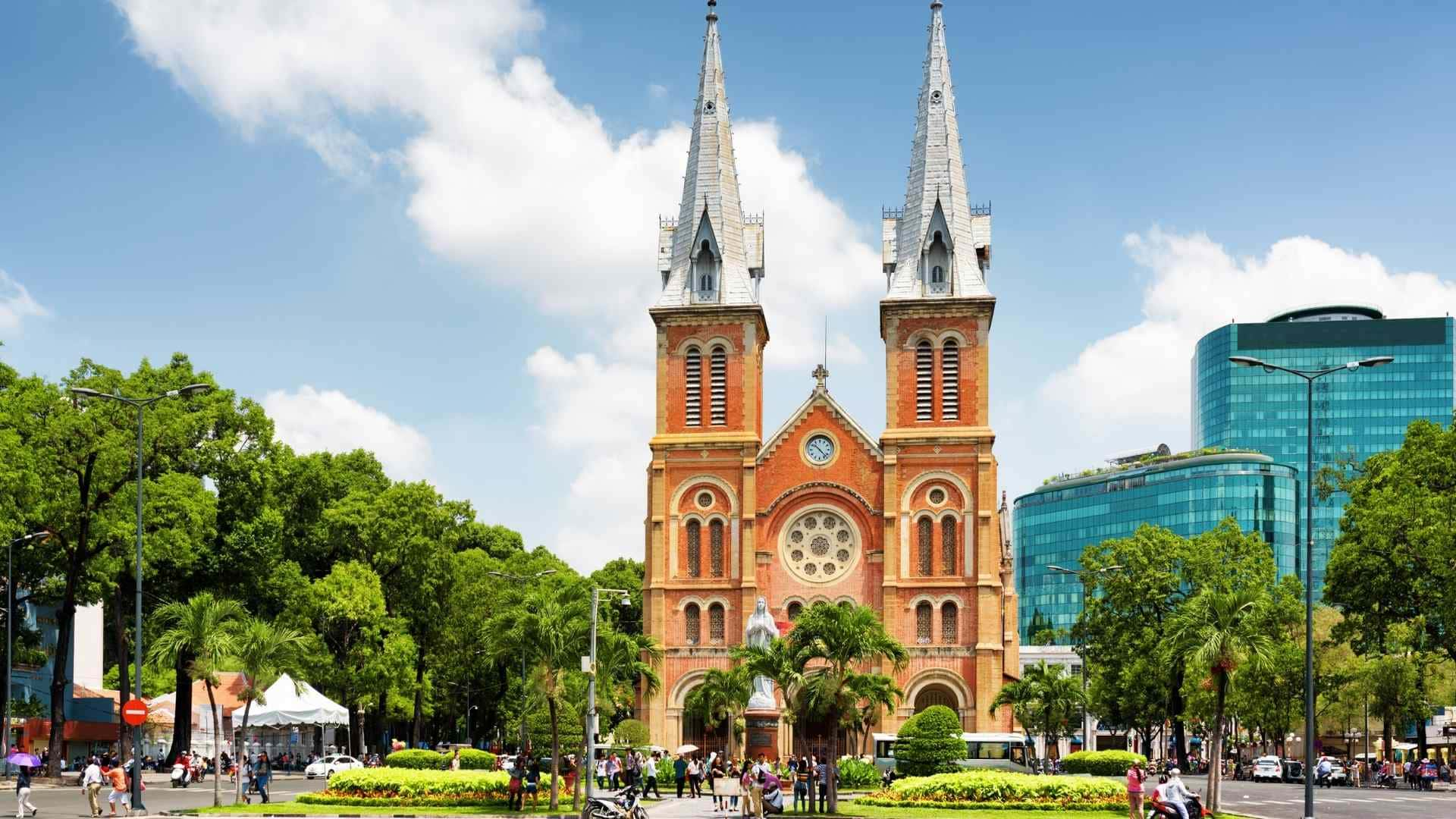 |
|---|---|---|
High-end North Vietnam tour 12 days Featuring a seaplane ride over stunning Halong Bay and luxurious regional experiences | Discover UNESCO sites and the stunning Pu Luong Reserve. Enjoy a diverse adventure that's perfect for all ages | Exploring Halong Bay, Phong Nha, the Mekong Delta and more. Experience culture, adventure and breathtaking landscapes! |
Tips for visiting temples in Vietnam
Visiting temples in Vietnam offers a meaningful cultural experience, but it’s important to follow certain customs to ensure your visit is respectful and enjoyable. Here are some essential tips to keep in mind when exploring these sacred places:
- Respect religious traditions: Many famous temples in Vietnam are active places of worship. Maintain a quiet demeanor, avoid loud conversations or laughter and be mindful of your gestures, especially near altars or during ceremonies.
- Follow the dress code: Visitors should wear modest clothing that covers shoulders and knees. Outfits such as tank tops, short skirts, or shorts are often considered inappropriate. Before entering temple buildings, remove your shoes as a sign of respect.
- Practice respectful behavior: Avoid touching religious statues, altars, or sacred items unless explicitly allowed. During rituals or ceremonies, refrain from making loud remarks or interrupting worshippers.
- Be careful with photography: Some temples in Vietnam do not allow photography, particularly near sacred statues or during prayer sessions. Always look for signage or ask permission before taking photos—especially during religious events.
- Observe ceremonies respectfully: If you happen to witness a religious ceremony, stay silent and avoid drawing attention. Don’t walk in front of worshippers or sit in sacred areas unless you are certain it’s appropriate.
- Prepare for the climate: Many of the most famous temples in Vietnam are open-air or partially outdoors. To stay comfortable, bring sunscreen, wear a hat and carry water—especially during the hotter months.
Exploring the top temples in Vietnam is more than just sightseeing—it’s a journey into the country’s spiritual heart, cultural depth, and artistic heritage. Each temple tells a unique story, from ancient dynasties and heroic legends to vibrant religious traditions that still shape local life today.
Ready to explore Vietnam’s most iconic temples with ease and cultural insight? Let Hanoi Voyages craft your perfect itinerary and guide you through the most meaningful temples in Vietnam.
Dream about your trip to Asia, in private
We are here to make it happen with youFREE QUOTE, WITHOUT OBLIGATION

